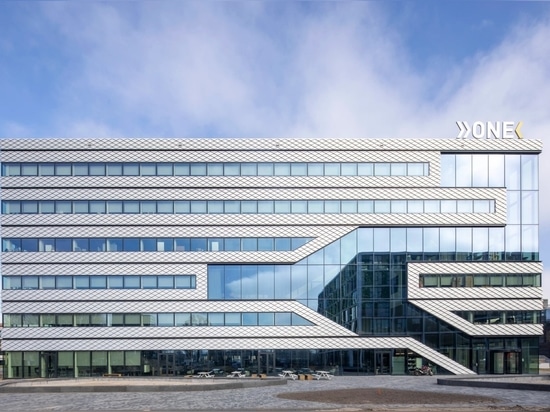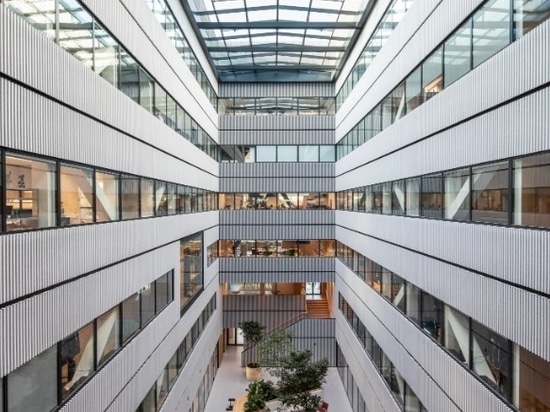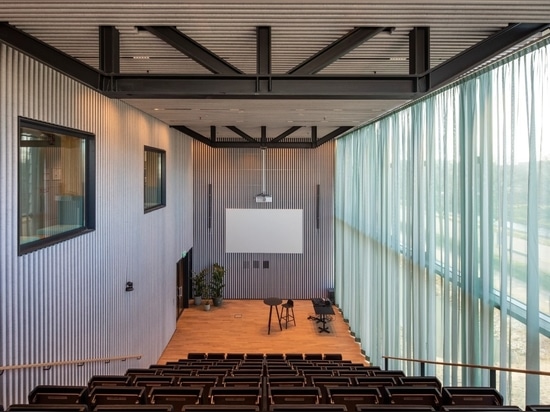
#COMMERCIAL ARCHITECTURE PROJECTS
Matrix ONE | MVRDV
Matrix ONE is designed to be demountable, allowing the structure to be fully dismantled and for the elements to be reused in similar high-quality construction.
Facts
Project Name: Matrix ONE
Location: Amsterdam, the Netherlands
Year: 2018–2023
Client: Matrix Innovation Center
Size and Programme: 13,000m2 – offices, laboratories, education spaces, restaurant Sustainability certification: BREEAM-NL-Excellent
Credits
Architect: MVRDV
Partner: Frans de Witte
Design Team: Fedor Bron, Mick van Gemert, Roy Sieljes, Fouad Addou, Aneta Rymsza, Andrea Manente, Ievgeniia Koval, Lesia Topolnyk, Giuseppe Carosini, Damla Demir
Visualisations: Antonio Luca Coco, Pavlos Ventouris, Luca Piattelli, Luana La Martina, Francesco Vitale, Gianlorenzo Petrini, Cinzia Bussola
Video: Yayun Liu, Josua Hefti, Alexander Forsch, Miruna Dunu
Copyright: MVRDV Winy Maas, Jacob van Rijs, Nathalie de Vries
Partners:
Contractor: De Vries en Verburg
Project coordination: Stone 22
Landscape architect: Karres+Brands; Gemeente Amsterdam Structural engineer IMD
MEP, Building physics: Deerns
Cost calculation: IGG
Environmental advisor: ATKB
Interior architect: MVRDV; UP Architecture
Photography: © Daria Scagliola
*
Key statistics
- Total GFA: 13,000m2
- Height: 25m, 6 storeys
- Sustainability certification: BREEAM-NL-Excellent
Circularity & flexibility
- Matrix ONE is designed to be demountable, allowing the structure to be fully dismantled and for the elements to be reused in similar high-quality construction. Elements are separated into categories based on their expected lifespans – furniture, for example, has the shortest lifespan, and the supporting structure the longest – and categories with shorter lifespans can be upgraded or removed without impacting those with longer lifespans.
- The primary structure of Matrix ONE is steel frame and prefabricated hollow core slabs, which were designed without any fixed connections. The standard layer of in- situ concrete on top of the prefab floor elements is omitted and compensated with thin steel bracing under the floor.
- The façade and interior elements also have circular properties. For example: The aluminium facade modules are directly screwed to the wooden façades and the emblematic felt wall covers are assembled as (cradle to cradle certified) modules hanging in metal profiles.
- The building’s digital model, with over 120,000 individual elements, has been included in Madaster, an online material database that documents all materials used in the building for potential future reuse.
- The optimised steel structure with columns allows for an open and flexible plan in the office floors. The spans are deliberately small to reduce the thickness of concrete floors and thus save CO2.
- All interior walls can be moved or removed, allowing different interior configurations, making the building’s interior fully flexible and future-proof.
- The finish flooring of all workspaces is continuous so that walls can be placed anywhere. The flooring consists of 95% bio-based and renewable materials and is relatively easy to replace.
- Modular installations are based on a 1.8-metre grid all over the building using standard, prefabricated elements. Concentrating installation ducts in the corridors and leaving them exposed allows for easy adaptability and maintenance, without having to open or destroy ceilings, and therefore reducing waste and materials.
- A large water retention tank under the building complies with progressive Amsterdam rules for storm water retention. By storing the water under the building (instead of on the roof) the weight of the roof was reduced, resulting in less material use in the structure of the building, therefore saving CO2.
Energy & comfort
- The Matrix ONE building performs as almost energy neutral (EPC=0.14) due to the efficient design of the building and services.
- The compact shape of the building results in an optimal floor to façade ratio, saving on both materials (and therefore embedded carbon) and energy use (and therefore operational carbon).
- Natural light: the façade design, the atrium and optimised floor depths allow for good daylight conditions in all the workplaces and reduction of energy use for lighting.
- Automated sun shades in all workspaces reduce the heat load, improving comfort on sunny days and reducing the amount of energy required for cooling.
- The social stairs on the building’s southern corner feature an “in-between climate” with natural ventilation. Fresh air enters the building via vents in the floor and leaves though the openable roof above the building’s staircase. This ensures a comfortable climate with low-tech solutions; reducing material and energy use.
- The green roof helps to insulate and cool the upper floors of the building.
- Solar panels cover the full roof, a total of 1,000m2, generating a significant proportion of the energy the building uses.
- Matrix ONE’s heat pump system connects to an underground heat-and-cold storage.
- Heat recovery of air that leaves the workspaces takes place at the top of the atrium
and preheats the incoming fresh air.
- The users control and regulate the temperature and lighting conditions in their
workspace with a phone app. This app, combined with sensors throughout the building’s spaces help to monitor and optimise the performance of the mechanical and electrical systems.
- The collective spaces of the building have lighting systems connected to movement sensors to reduce energy use for lighting.
- In the atrium and the social stairs, plants, trees, and green walls ensure a favourable indoor climate and the well-being of the users.
Social interaction & behaviour
- The building is designed to create a spirit of cross-fertilisation and innovation by the introduction of social and collective spaces where users will meet intentionally or coincidentally.
- A public route cuts through the building’s ground floor and connects to Matrix ONE’s main social spaces such as the social stairs, auditorium, and restaurant. Instead of keeping other campus users out, the building stimulates visits with its inviting architecture and social amenities that serve the entire campus.
- Matrix ONE is strategically located in the heart of Amsterdam Science Park and is well connected to public transport. Bus stops are next to the building. The Amsterdam Science Park train station is just a 10-minute walk away.
- A spacious and attractively located bike storage stimulates the use of bicycles for commuting. This space visually connects the campus to the building’s atrium. From there users can directly access the locker room equipped with showers.
- The plan design of Matrix ONE stimulates physical movement and the use of stairs. The stairs have a prominent position and attractive amenities. By contrast, the elevator is discreetly placed next to the atrium.
- Some of the façade modules of Matrix ONE which are oriented to the north east host nesting boxes for birds. The roof also includes gravel beds for nesting and features an insect hotel to stimulate the biodiversity of the campus.





